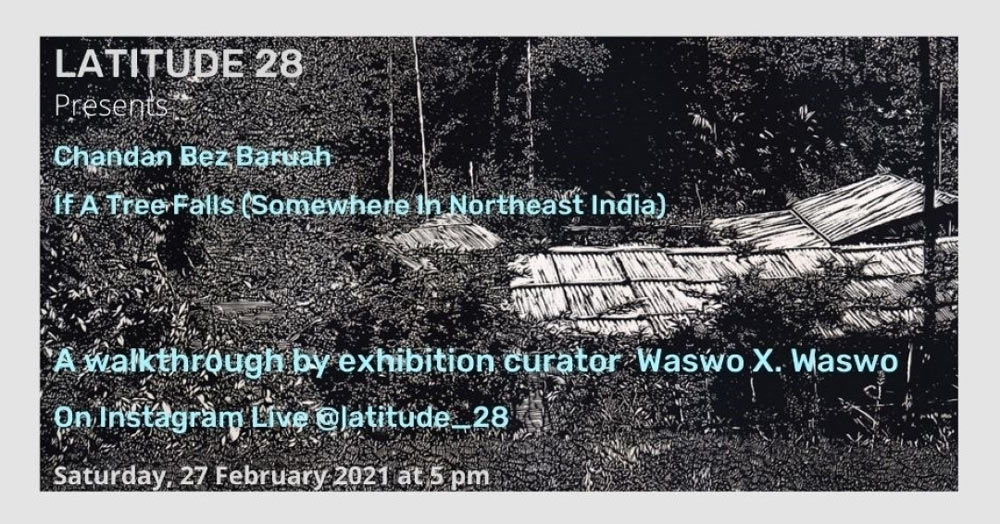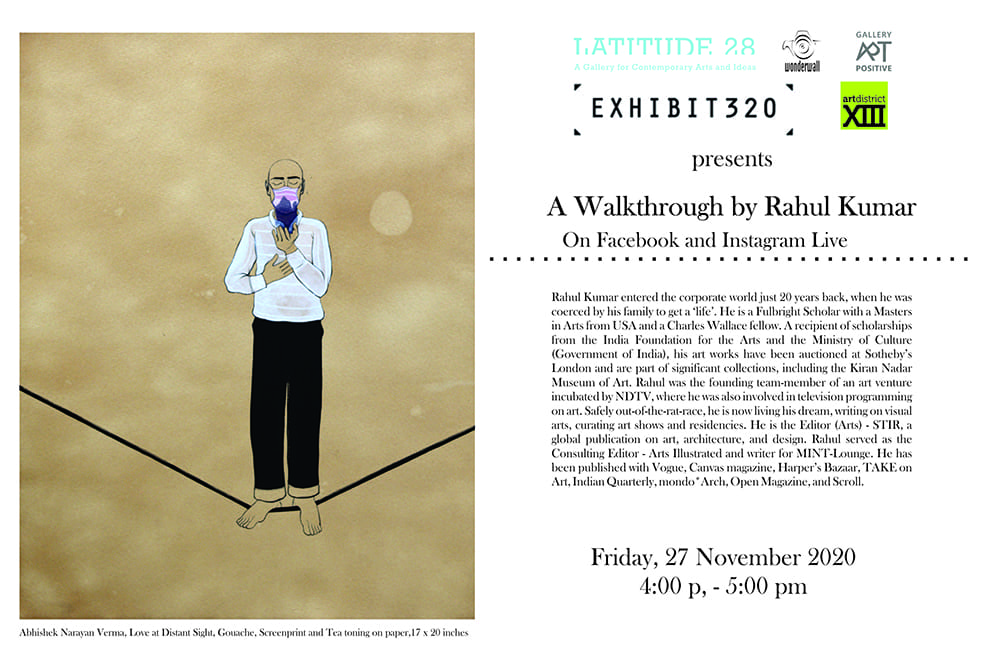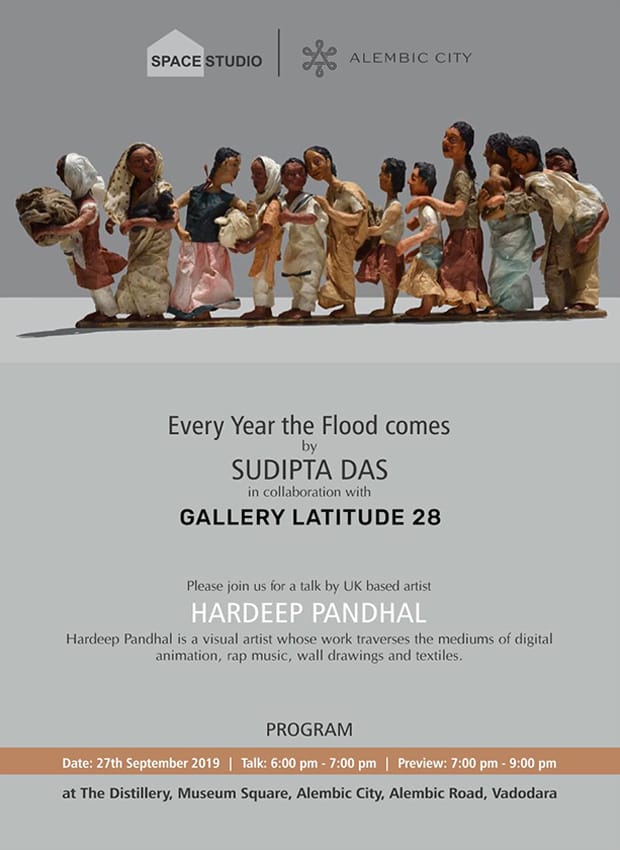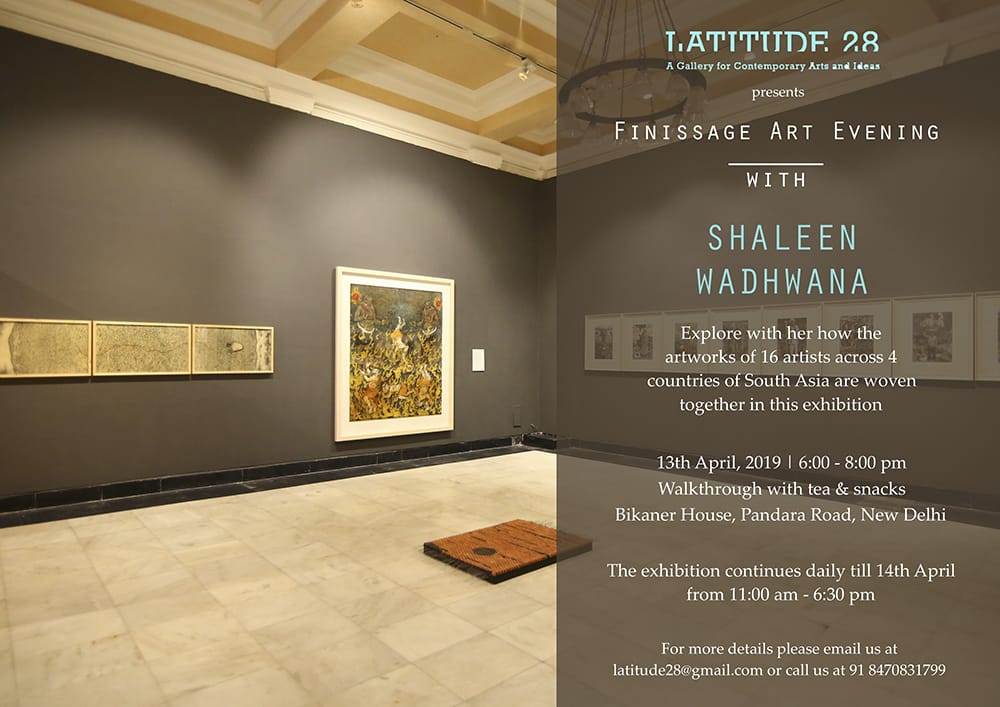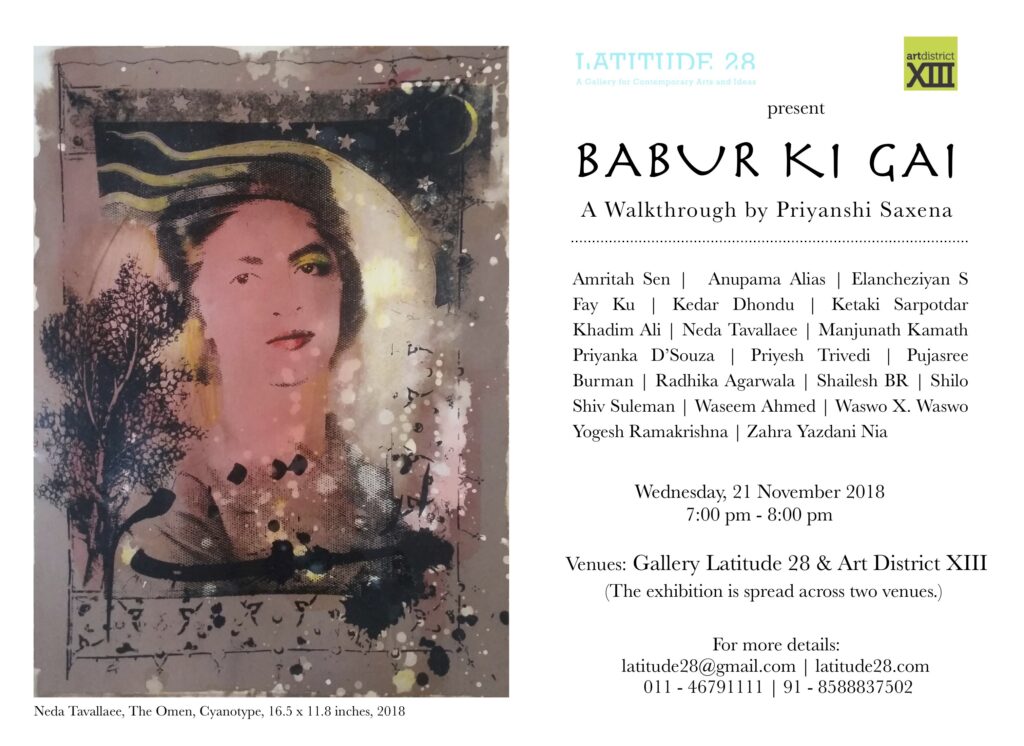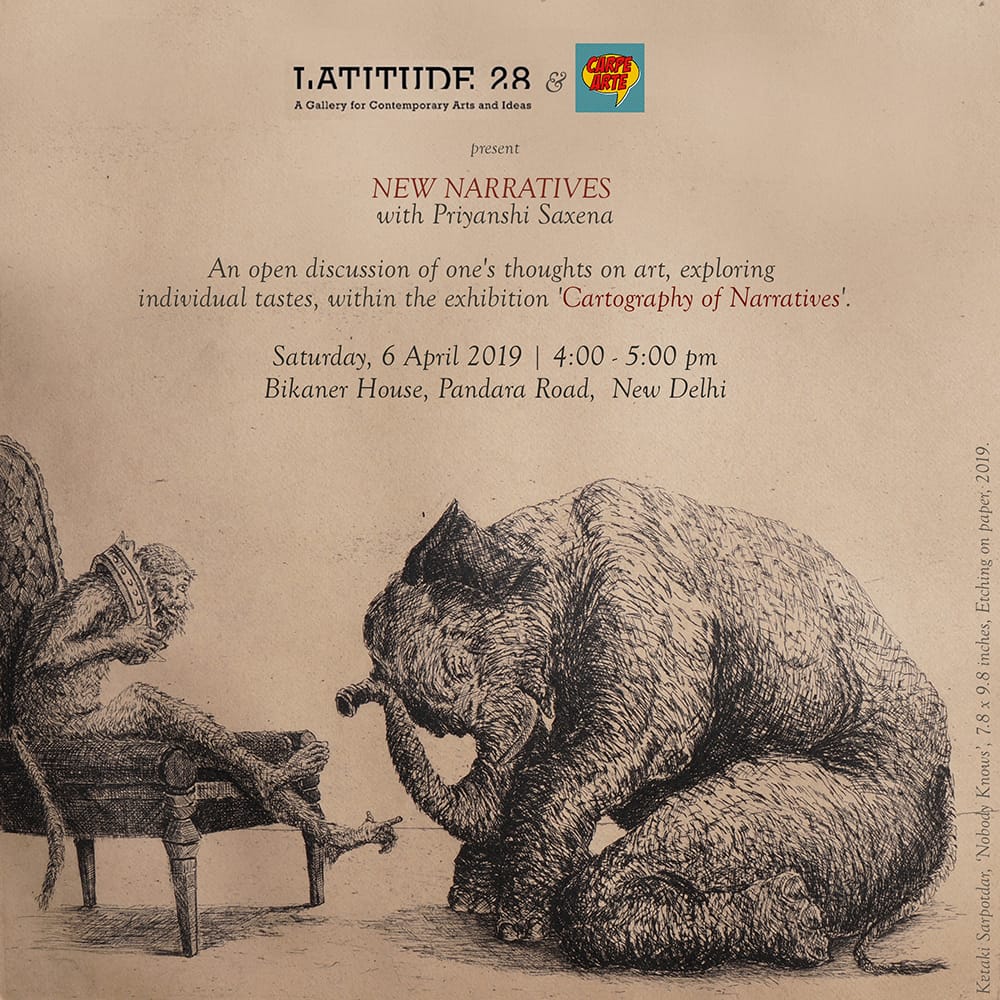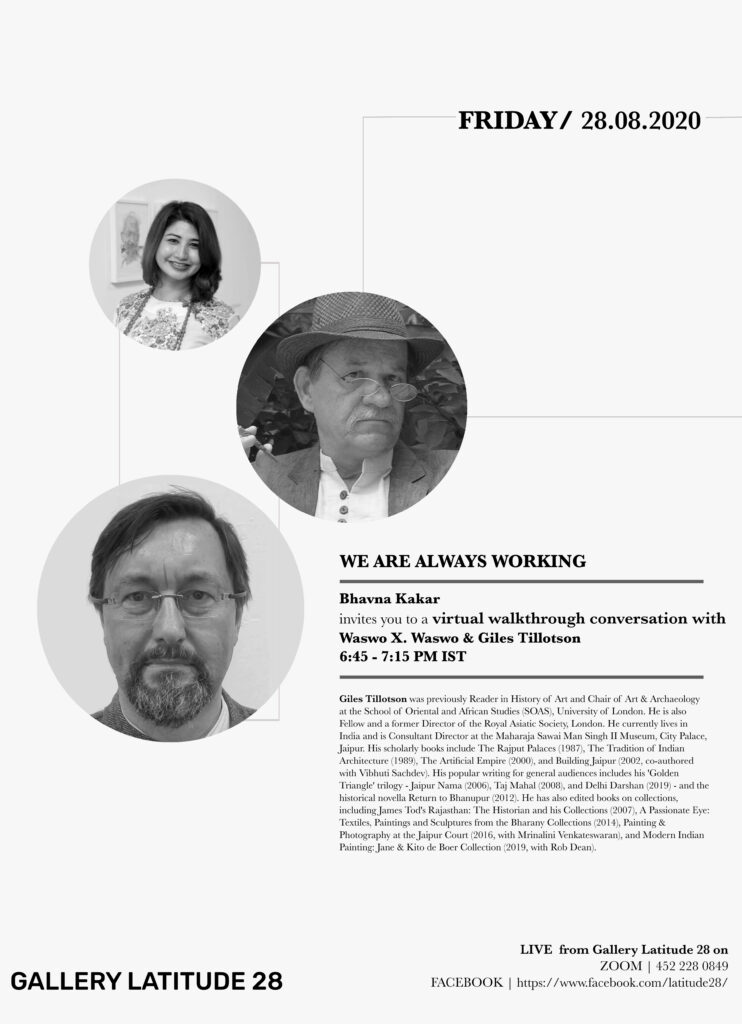Events
If A Tree Falls (Somewhere in Northeast India): A walkthrough with Waswo X. Waswo
In a rambling (and ultimately self-rejected) concept note to his series Somewhere in Northeast India, Chandan had opined that one purpose to his landscapes was “to see the insight terrain of the marginalised or the subaltern, and to situate Postmodern landscapes as encountering Romantic theory”. The truth of Chandan’s statement is evident when looking at the work. Meticulously carved upon medium density wood-fibre matrixes, these woodcuts nonetheless spring from the digital photographs which Chandan has earlier captured for reference. The artist’s inspired translation of these photographs, and highly skilled hand-craftsmanship, is astounding. The photorealist style he painstakingly employs is complicated by the chaos of the scenes; a chaos unlike the orderly compositions one might expect in more traditional and Pictorialist vocabularies, yet which holds a graphic beauty of its own. Devoid of human figuration or wildlife, Chandan unashamedly subscribes to the notion of the solitary observer, or, as the American photographer Ansel Adamas once put it,
To the complaint, ‘There are no people in these photographs,’ I respond, ‘There are always two people: the photographer and the viewer.’ Yet, there are many more than two people in these woodcuts. There are multitudes. Chandan’s stark, mountainous undergrowth exists within ecologies and geographies of history, culture, and contemporary conflict.
When is Empathy too much?: A walkthrough by Rahul Kumar
Rahul Kumar entered the corporate would just 20 years back, when he was coerced by his family to get a ‘life’. He is a Fulbright Scholar with a Masters in Arts from USA and a Charles Wallace fellow. A recipient of scholarships from the India Foundation for the Arts and the Ministry of Culture (Government of India), his art works have been auctioned at Sotheby’s, London and are part of significant collections, including the Kiran Nadar Museum of Art. Rahul was the founding team-member of an art venture incubated by NDTV, where he was also involved in television programming on art. Safety out-of-the-rat-race, he is now living his dream, writing on visual arts, curating art shows and residencies He is the Editor (Arts) – STIR, a global publication on art, architecture, and design. Rahul served as the Consulting Editor – Arts Illustrated and writer for MINT-Lounge. He has been published with Vogue, Canvas Magazine, Harper’s Bazaar, TAKE on Art, Indian Quarterly, mondo* Arch, Open Magazine, and Scroll.
Every Year the Flood Comes: A talk by Hardeep Pandhal
Through collections and assemblages of her now-iconic doll-like paper sculptures, Das dives into personal history and family narratives to explore themes of exile, refuge and temporariness of life. Meticulously crafted from layers and layers of handmade Hanji paper, her chosen medium is fragile, yet resistant. A quality that reflects the tenacity of the unnamed people whose stories she seeks to tell. An unsuspecting medium, paper has long been a hidden protagonist in the narratives of placelessness. Without paper, one has no form of identification. Without identification, one loses the freedom to move from place to place. One loses their proof of belonging.
Finissage Art Evening with Shaleen Wadhwana
Explore with her how the artworks of 16 artists across 4 countries of South Asia were woven together in this exhibition.
Babur Ki Gai: A walkthrough with Priyanshi Saxena
This exhibition examines the oxymoron of ‘contemporary history’ through the phenomenon of mythopoesis commonly understood as the power of myths to engender or modulate reality. The concept of the ‘contemporary’ as the fleeting ‘nowness’ is at odds with history taken to mean the documented past. Like Heisenberg’s uncertainty principle, the instant the duration of the contemporary is registered, it seizes to be of the present and passes into the domain of the past. On the other hand, mythical thinking appears to operate from the vanishing point of an unspecified past, if not the pre-historic, from where it continues to guide the present. Its hold and influence is partly due to the patina of seemingly incontrovertible timelessness and veracity acquired through the repeated practice of collective belief over an extended period of time. Whilst the hauntology or the point of origination of myths is subject to uncertainty, their teleology remains firmly rooted in the present such that old myths are periodically revived and refitted to the demands of the contemporary. One way to create contemporary mythologies then is through speculation, a prognosis of the moment that is to unfold in the near future or is the projected outcome of a present continuous.
New Narratives with Priyanshi Saxena
‘Cartography of Narratives’, showcased works by 16 artists from the Indian subcontinent and beyond. What does civilisation contain but disjointed lived experiences of passing temperaments. Through evidential remnants, phantom memories and oral narratives, contemporary mythopoesis issues out of empirical notions, experiences and sustained gestures. Interspersed with the physical, the architectural and the natural, the ‘Cartography of Narratives’ becomes a mapping of the lived, imagined and the oneiric, that clutch within its framework, hints to aspects of reality. The panorama is structured on a network of consequences, with possible contingencies determined by their causal relationships. Fact and fiction become ambiguous entities. While history can be viewed in the light of factual evidences of a recent past, mythology, contained within fictional configurations, harks back to primeval times. What amount of truth lies in contemporary reiterations of these historical chronicles, without an element of fiction? While history on the one hand is selective, on the other, as a result of repeated iterations, it becomes a fabrication over due course.
We Are Always Working: A virtual walkthrough conversation with Waswo X Waswo & Giles Tillotson
In a world where academic and even popular discourse has moved beyond Saidian concepts of Orientalism and Othering to a new and broader terrain that encompasses “whiteness”, “privilege”, and “cultural appropriation”, the foreign white artist in Asia finds his or herself in ever more uncomfortable political/philosophical positions. For those of us who make an attempt at art making (I consider photography intrinsically linked with the other arts), the knowledge that we will probably trespass a critical line of “correctness”, intentionally or unintentionally, is always there. As an artist-photographer who has lived and worked in India for well over sixteen years, a large part of my concerns have been with navigating, responding to, or combatting what sometimes seems as an insurmountable outsider-ness both within and beyond the Indian art scene. This “outsider-ness” extends to geographies elsewhere aside from India, where both white and non-white curators question the validity of a non-Indian claiming membership in the “Indian artist club”, bringing up the issue, rightly or wrongly, of racial identity as a signifier.
